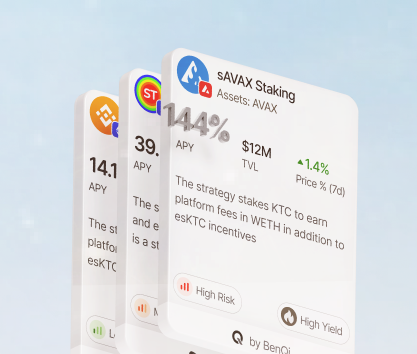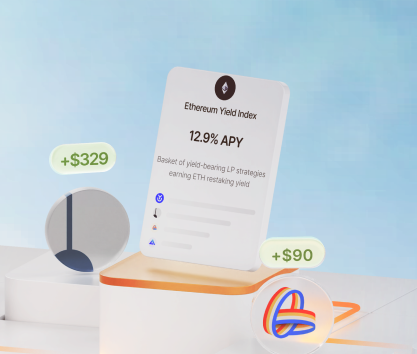We will preface the whole article with a very important disclaimer. “Degen” stands for “degenerate”. This is an important introduction to the topic at hand. Very few people make money using this approach and you need experience in technology, coding, and trading to take advantage of these protocols that appear quite regularly.
Let’s start with the concept of farming yields in general and slowly make our way to the phenomenon of degen projects that do not even hide their intentions as the very design of smart contracts and the pools’ structures make it clear that the main goal is to leave someone holding the bag.
High-risk yield farming
Highly speculative and incredibly dangerous investment schemes are generally used by two types of people:
- Extremely smart and experienced individuals who understand the risks and have a good idea of when they should enter and exit to maximize gains. They often avoid losing money and make a killing on badly designed smart contracts.
- Those who have small starting capital and want to get rich quickly. Usually, these people become the suppliers of funds to the ones mentioned above. Investors who do not have any prior exposure to the dangerous world of crypto quickly lose in these projects.
You should distinguish them from protocols like DEXes that often have high yields just to attract liquidity. They offer very high interest rates on pools that desperately require additional funding to sustain higher trading volumes. New projects that connect to a DEX are also encouraged to provide rewards so that their tokens are staked in a sufficient number of pools allowing them to be traded easier.
Mixed APYs are a standard practice in the DeFi ecosystem with two-sided pools paying different rates depending on the token type. However, these are still returns on investment often paid with a combination of revenue sharing or regulated token emission. On the other hand, projects that focus on DeFi yield farming by offering their newly minted tokens in exchange for valuables are usually typical pyramid schemes.
Investing in these protocols can be profitable if you can time the exit and find buyers for obtained reward coins. However, the number of those who successfully pull this off is very close to zero. In fact, the vast majority of them have insider information or the technical know-how to read the code and understand the mechanics it enables. If you don’t belong to either of these groups, it is a good idea to keep your distance from suspicious projects.
What is degen yield farming?
This particular term refers to projects that revolve around gathering investor funds to propel the price of minted tokens. The initial price is determined by the size of the pool containing assets provided by willing participants.
The timeline goes as follows:
- A new protocol announces its upcoming launch and specifies pool parameters to investors.
- The protocol initiates a presale to secure initial funding and the minting of tokens.
- Collected funds represented by different types of digital assets determine the launch price.
- Investors start receiving interest rates and can sell newly minted coins when the time is right.
One must remember several caveats of this scheme that look fine on paper:
- Developers often do not invest their own money indicating that they themselves do not have faith in the token.
- To ensure that they make money on this operation, pools take a small cut of all deposits (usually, 3% — 5%).
- The price of the token often tanks immediately after the new token is available for selling. In some cases, the date when they are marketable is specified separately.
Token volatility in yield farming
The problem with trying to liquidate holdings is in the natural movement of the market when a coin that does not have any real footing is sold in massive quantities. In a sense, it is a race to the bottom with investors trying to exchange new tokens for whatever actually has value. Since pools may accept a variety of tokens, it is possible to sell some of the new tokens on DEXes where they are listed.
Volatility is not the right word for what happens right after the launch of a degen project since it lasts for a short period. The price usually surges right after the first rounds of trading as tokens are priced based on the value of pools and can be exchanged at an appropriate ratio. Then, it drops dramatically due to several factors:
- Inflation is caused by unlimited token minting. Many projects do not have any anti-inflationary mechanics.
- The market reacts violently to the sudden influx of tokens. The price collapses after too many sell orders flood exchanges.
- The demand for a token that may have gained traction due to initial trading volumes or smart marketing quickly plummets.
When it comes to degen pools, volatility is not the right word as this particular price movement pattern is quite predictable. Any experienced investor will spot it immediately.
DeFi projects and rug pulls
If you think that this scheme seems like a pyramid scheme, you are absolutely right. The price of minted tokens depends on the volume of attracted deposits. In essence, it means that interest rates are paid using assets provided by early investors. After the first several rounds of investments, there is an influx of cash contracts, and those who are smarter simply wait for an opportunity to sell.
This particular scheme is quite common in CeFi and DeFi alike. Ponzi projects have a separate category on many decentralized finance trackers and comprise a significant portion of up-and-coming protocols that gain traction in niche crypto communities. You can usually find some of them on aggregators like Beefy Finance and DEXes like ORCA or deployed directly on layer-2 and layer-3 networks.
Note that many responsible aggregators do not endorse any of these projects that may become rug pulls and caution investors about the risks associated with such investments.
Degen yield farming strategies
There are no official numbers or studies about the share of investors who come out on top in these schemes. However, we can safely assume that the vast majority of investors lose since price action and trading volumes suggest that only a handful of capital holders make bank before everything collapses in a spectacular fashion.
There is only one viable strategy for those who want to profit from these obvious pyramids:
- Make a sizeable deposit to receive as many new tokens in exchange as possible.
- Accumulate enough APR to cover fees and commissions if the price remains stable at the beginning.
- Exit as soon as possible when you still have even a relatively small profit.
The problem with this approach is that timing is everything. You must be among the earliest investors to benefit from an adequate ratio of reserves to minted tokens. Then, it is imperative to wait for the right time and sell at a high price. Fees associated with depositing money in the first place have to be accounted for.
Retail traders who want to speculate on prices should keep their distance from these tokens since trading volumes and liquidity remain sufficiently high only during early phases.
Risks of degen farming
Now, that you know the scheme and understand the setup, deducing potential dangers is not too hard. Typical risks like market volatility, economic uncertainty, or regulatory issues simply do not have enough time to unfold and impact your holdings. The lifespan of a degen project token is usually too short to become affected by macroeconomic factors.
On the other hand, some other threats are way more pronounced:
- Smart contracts are often faulty. Since developers do not have faith in the long-term success of their operation, they approach the coding part without doing their due diligence or auditing the code. These smart contracts can be easily exploited.
- A total rug pull. In some cases, developers invest a sufficiently large amount of their own money or print more tokens and set up the tokenomics to receive more. They quickly exit their position right after launching the project. If they don’t get too greedy, they can leave all early investors holding the bag.
- No regulation. If you are scammed via this method, there is no way for a legal recourse. You simply have to swallow the losses and hope that you will be smarter next time. Law enforcement units are simply not equipped to deal with the fallout of schemes conducted in the DeFi ecosystem.
Minimizing risks in yield farming
The only effective way to avoid the danger of losing money in this particular scenario is to not participate in the first place. If you believe that you are smarter than 99% of people who invest in these schemes and lose money, there is an even higher chance that you will join them. As mentioned previously, online insiders and very educated tech geeks can come out on top without getting extremely lucky. However, if you bet on the latter, buying a lottery ticket is a better investment than a degen farm.
If still decide to participate, here are some things that you can do:
- Make sure that the deposit fees are as small as possible to reduce the time you need to wait before selling to cover them.
- Do not work with protocols where developers do not invest some of their money to boost the initial price.
- Avoid holding for too long to gain more through generous APYs. Timing your exit well is the most important part of the strategy.
- Do not invest more than you are willing to lose. The absolute majority of investors lose money on betting that they can outplay the market. Losing a bet should be expected.
If you believe that there are correlations between typical liquidity farming risks and what you should be afraid of when investing in degen pools, think twice because the differences are everywhere. Investors should understand that these protocols are more like gambling than speculative investing.









